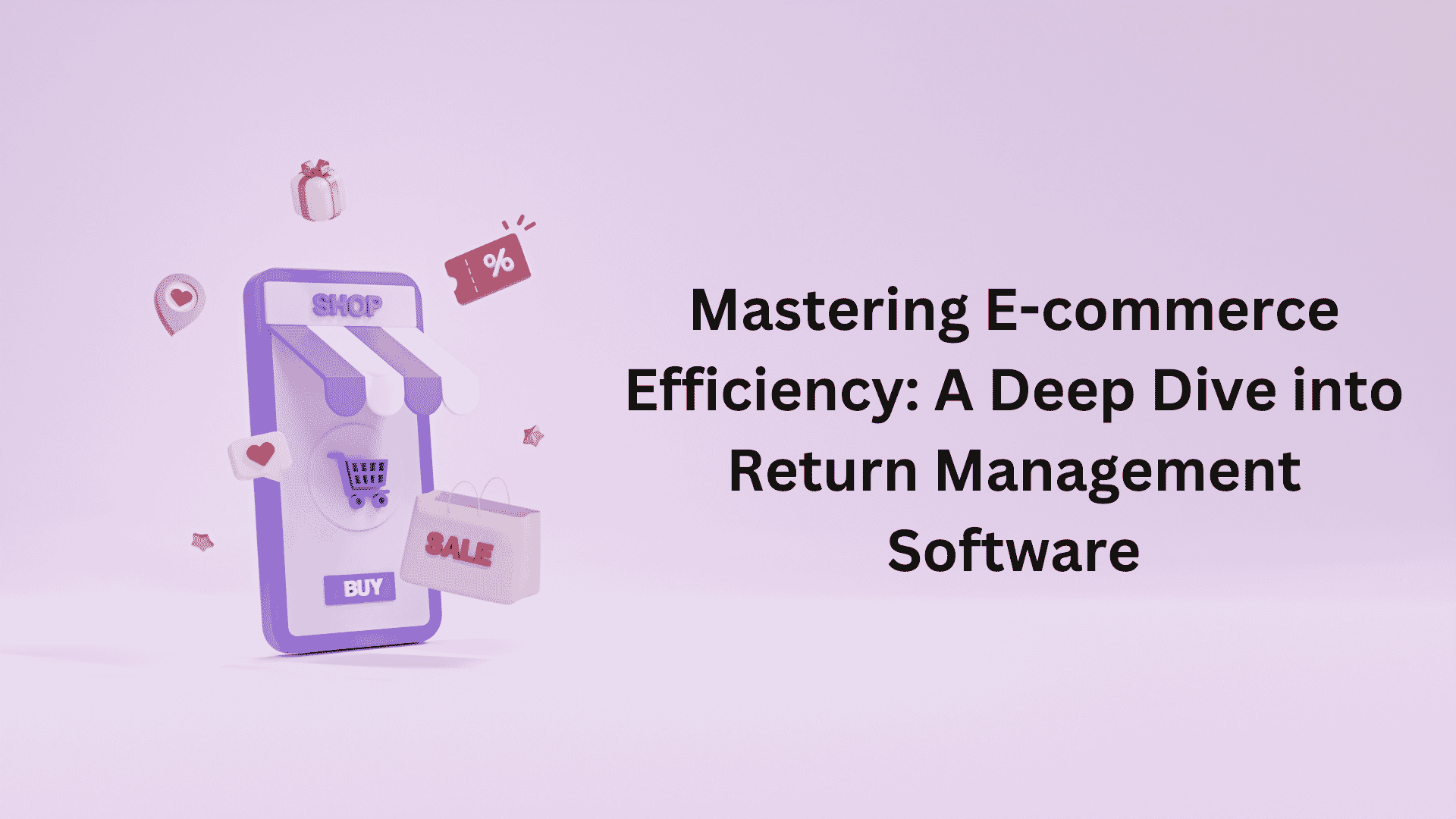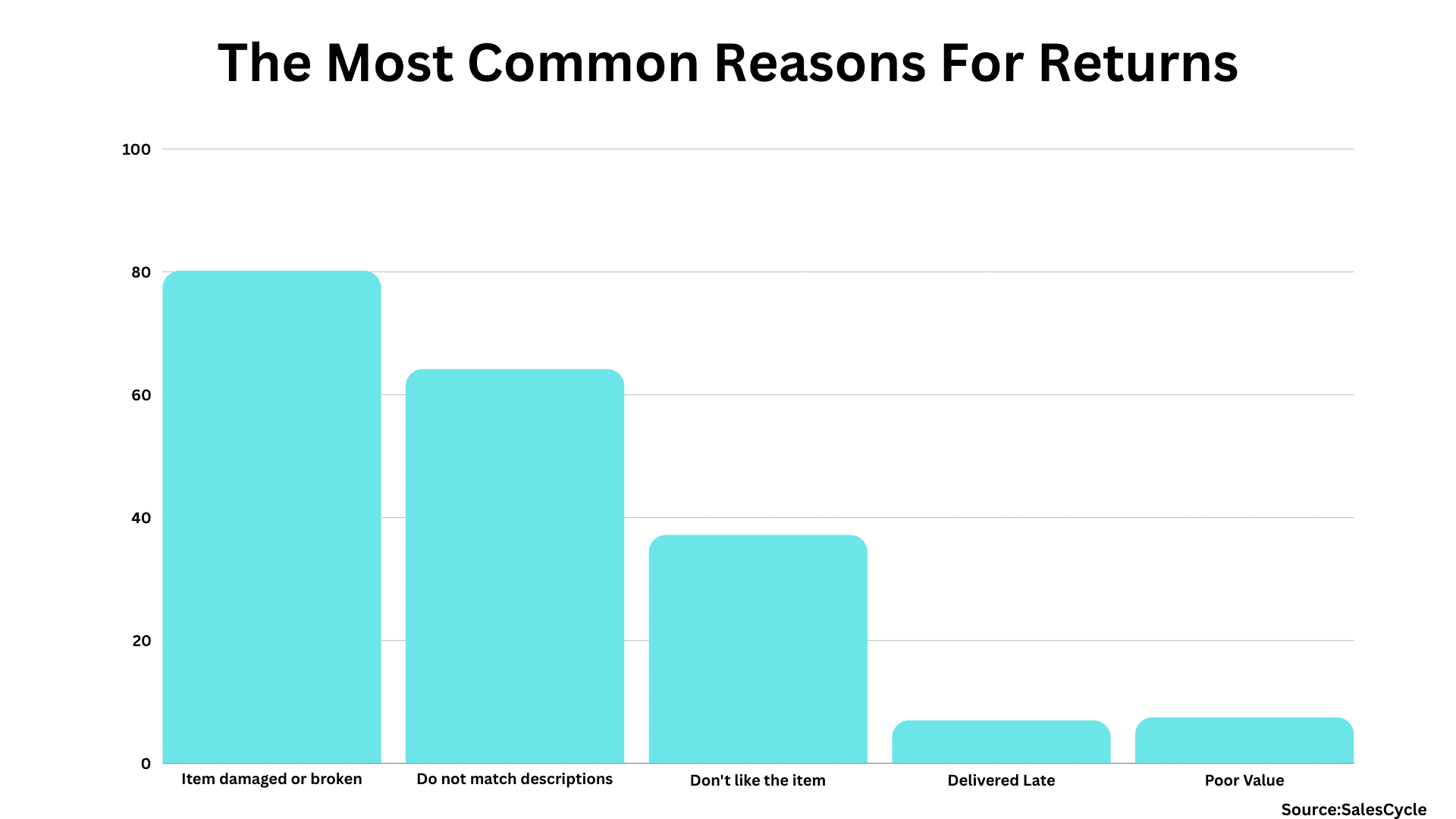Let’s be real – managing online returns is a total pain. Customers and stores alike find the process confusing and frustrating. But returns aren’t going away. So, what should an online store do? The answer is using return management software to become a returns rockstar!
This software helps stores handle returns from start to finish in an organized way. In this article, we’ll look at what return software is, who uses it, and how it makes returns efficient. Getting the right software in place sets up stores for success by saving time and money while keeping customers happy.
Contents
Understanding Return Management Software

We all know returns can be a hassle. Return management software helps companies smoothly deal with customers wanting refunds.
The return management software facilitates a seamless and efficient process, allowing customers to swiftly request and gain approval for returns through an intuitive online platform. This user-friendly system not only expedites the return authorization process but also provides a transparent tracking mechanism for returned items. With the integration of advanced features, the return management software ensures that returned products are automatically directed back to the respective warehouse or store, streamlining the logistics involved in the reverse supply chain.
Moreover, the software plays a pivotal role in maintaining the company’s inventory by promptly updating stock levels and providing real-time insights into product availability. This return management software serves as a comprehensive solution, fostering customer satisfaction, operational efficiency, and inventory accuracy.

The software makes returns a breeze for customers, reducing costs and losses for companies. The software also provides data to understand why returns happen and how to improve products and policies. This leads to happier customers and more sales.
Key Components of Efficient Return Software:
A. Automated Return Authorization
Automated approval speeds up returns for shoppers and simplifies the process for companies. Rather than calling customer service, shoppers can initiate returns online. The software checks order details and approves the return instantly without an employee. This saves companies money on customer service, ensuring a streamlined process that leads to a happy customer.
B. Integration Capabilities
The return software works with the company’s other systems for inventory, orders, customers, etc. This keeps all systems in sync when an item is returned. Integrations make return processing seamless and accurate.
C. Data Analytics and Reporting
The software collects return data and generates comprehensive reports. This helps companies understand why returns happen. The insights allow companies to fix issues and optimize products, policies, and operations. Ultimately, this reduces return rates, boosts profits, and enhances the customer experience.
Benefits of Implementing Return Software:
A. Enhanced Customer Experience
The returned experience seriously impacts customer loyalty. In surveys, 73% of online shoppers said easy returns make them more likely to reorder. So good return software improves customer happiness and repeats purchases.
B. Operational Efficiency
The software reduces manual labor by automating returns. Instead of employees processing each one, the automated systems handle most of the work. This can speed up returns by 20%, saving companies labor costs.
C. Cost Reduction
Globally, returns cost companies over $400 billion every year. The software aids in lowering these costs. It analyzes why returns happen so companies can improve products and policies to reduce them. Automating the process also cuts down on individual shipping, handling, and restocking costs. Overall, the software saves money.
Challenges and Considerations:
A. Integration Complexity
Connecting the return software with all the company’s systems can be complicated. The data and programming might not sync up well. The IT team needs to work closely with software vendors to ensure smooth integration.
B. Scalability
As businesses grow, old systems struggle with more orders and returns. It’s important to choose software that can easily scale up over time. This ensures it keeps working efficiently if order volumes spike.
C. Policy Alignment
The return policy needs to balance customer satisfaction and profitability. The software should have features to evaluate if the policy achieves those goals frequently. The data and controls should help adjust the policy as needed.
Choosing the Right Return Software
Picking the ideal return management software to match a company’s needs is super important. With so many options out there, you have to evaluate the key things:
- Automation Capabilities – The software should do a ton of stuff automatically using workflows, AI, and robots to minimize boring manual work. Advanced automation allows hands-off return approvals, refunds, reimbursements, and more.
- Analytics Features – Robust analytics and detailed reporting are a must-have. This gives you the metrics and insights needed to make smart policies and improve processes.
- Integrations – Check out all the systems like order management, ERPs, and warehouse software that the returned software can connect to via APIs. Broad integration is vital for smooth efficiency.
- Omnichannel Support – Look for the flexibility to handle in-store and online returns in one unified platform for full visibility into return patterns.
- Mobile Access – Mobile optimization lets customers and employees manage returns remotely via their phones. Extra convenience boosts satisfaction.
- Scalability – See if the software can handle business growth and seasonal spikes in orders and returns while keeping up performance. Scalability optimizes your investment as needs change.
- Cost Model – Compare upfront license fees to ongoing subscription fees to pick the best budget fit.
Review these key aspects to find the ideal solution, such as ReturnLogic, that excels in automation, analytics, integration, and flexibility.
Optimizing Your Return Management
In addition to software, optimizing your processes is crucial for achieving excellence in returns. Some essential best practices:
- Proactive Communication – Keep customers in the loop on return status through automated emails and portal updates. Share processing timelines and enable tracking.
- Flexible Return Options – Allow customers to self-initiate returns easily online, on mobile, and in-store. Increased convenience leads to happier customers.
- Data-Driven Policy Optimization – Use software analytics to keep tweaking your return policy based on changing consumer expectations and market trends.
- Performance Reviews – Regularly review software reports and metrics. Spot weak points in processes, products, staffing, etc. and make improvements.
- Carrier Management – Track carrier metrics like on-time delivery and damage rates. Identify poor performers and optimize shipping.
- Cross-Team Collaboration – Get customer service, warehouse, and finance teams working together to streamline returns handling.
Combining robust return software with optimized policies, processes, logistics, and collaboration can lead to successful returns!
FAQs
Automating workflows enables quicker refunds and status updates. Self-service portals also let customers initiate returns anytime. This convenience offers great experiences that build loyalty.
Automation and analytics help optimize labor, shipping, processing, and restocking costs from returns. Companies can achieve 20-30% operational cost savings and 10-15% lower return shipping costs.
The software has APIs and connectors that interface with major platforms like Shopify, Magento, and BigCommerce. This allows real-time data exchange across systems for smooth workflows.
Conclusion
Using return management software is key for e-commerce businesses wanting to master returns. Automating tasks, integrating systems, leveraging analytics, and offering easy returns enables skillful handling of product returns. Employees can do more valuable work, costs decrease, and customers are happier.
However, the software is just one component. Companies also need to keep honing their policies, processes, logistics, and collaboration as consumer expectations evolve. With robust software plus optimized operations, businesses can turn returns into a strategic win rather than a cost center. Skillful return management boosts customer lifetime value, loyalty, and sales growth. As e-commerce gets more competitive, return excellence becomes mandatory. Retailers who embrace software and optimization will thrive with sustainable success in this forward-thinking approach.
Also Read:
- How to Change Twitch Name Color in Chats & More Tips
- Effective Ways To Improve Your SEO With Heatmaps
- Java Print vs Println – What’s The Difference?
- How to Use Discord in Full-Screen Mode(Web & Application)
- Printf vs cout: What is the difference?
